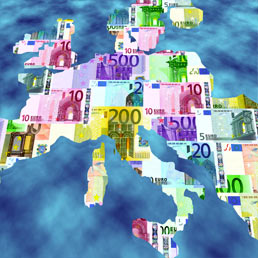Storia dell'articolo
Chiudi
Questo articolo è stato pubblicato il 29 aprile 2014 alle ore 11:41.

Italy's new prime minister, Matteo Renzi, came to power on that platform. Greek Prime Minister Antonis Samaras is trying to counter his leftist rival Alexis Tsipras in the same way. Portugal's Constitutional Court has thwarted the country's fiscal-consolidation efforts. And France's new prime minister, Manuel Valls, is also moving against austerity. Supposedly, everyone just wants more growth; unfortunately, when politicians talk about growth, what they usually mean is that they should be permitted to incur more public debt.
An increase in public debt causes a short-term surge in demand, helping to increase the degree of capacity utilization and keep unemployment in check. However, new debt is nothing but a form of dope, reducing pressure to take painful measures that would improve competitiveness and capacity growth.
This renewed decline in debt discipline reflects the socialization of potential bankruptcy costs among all eurozone countries by way of establishing joint-liability mechanisms. It is this de facto debt mutualization that has prompted creditors to accept lower interest rates, and it is only lower interest rates that have permitted Renzi, Samaras, Valls, and the others to distance themselves from austerity policies.
There is nothing surprising about this: When a decision-maker can claim full credit for a policy's benefits and collectivize the costs, he will pursue the policy sooner, more quickly, and to a larger extent than he would if he had to bear the costs alone. What is remarkable is how matter-of-factly Europe's transgressors succeed in cloaking themselves with the mantle of a new social breakthrough.
One only needs to look at the United States to see how dangerous – and indeed unsustainable – the eurozone's path has become. When one of the US states runs up too much debt, creditors become jittery and austerity measures are introduced to avert the risk of bankruptcy – as has happened in the past few years in California, Illinois, and Minnesota.
But all of that occurs while the debt/GDP ratio is still minimal and clearly below 10%, because creditors know that no one will come to their aid. The Federal Reserve will not buy their government bonds, and the federal authorities will not issue any guarantees.
In Europe, by contrast, easy access to the local printing presses before and after the foundation of the ECB, together with the new fiscal rescue mechanisms, ensure that investors start to become nervous only when debt ratios are 10-20 times as high. As a result, the debt level rises until it spirals out of control.
The critical limit beyond which creditors become anxious has been raised significantly by the bailout architecture put in place over the last two years. This will bring a few years of calm as debt levels climb steadily to that limit. Then the storm will come, battering ordinary citizens, while today's leaders remain high and dry, drawing pensions.
Hans-Werner Sinn is Professor of Economics and Public Finance, University of Munich, and President of the Ifo Institute.
Copyright: Project Syndicate, 2014.
www.project-syndicate.org
©RIPRODUZIONE RISERVATA
Permalink
Ultimi di sezione
-

Gli economisti
Perché preoccuparsi per la Francia?
di Paul Krugman
-

gli economisti
Krugman: il dibattito sull'austerity è politicizzato
di Paul Krugman
-
Italia
A Theory About European Naval Domination
di Paul Krugman
-

Italia
Una teoria sul predominio navale dell'Europa
di di Paul Krugman
-

IL PIANO JUNCKER
Gros: consumi prima che investimenti
di Daniel Gros










